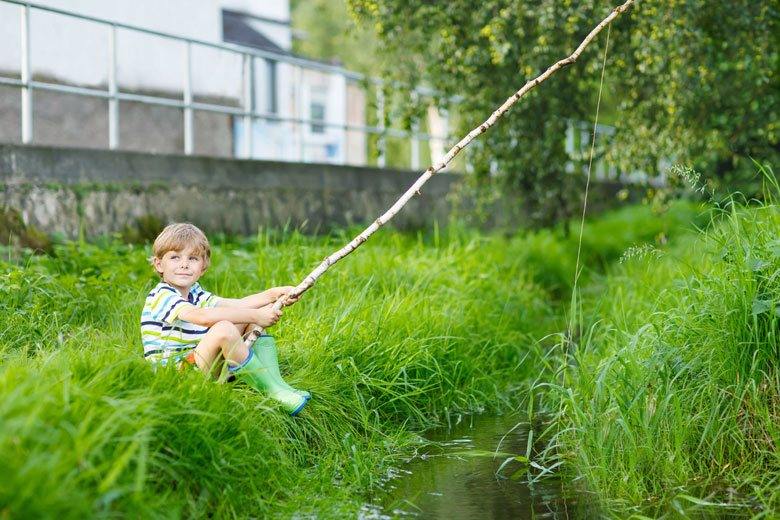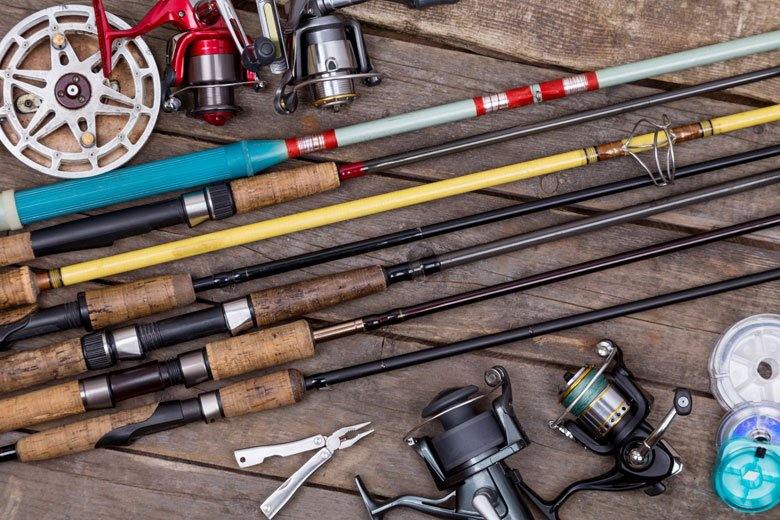Making your own fishing road is the true mark of a real outdoorsman. Learning how to make one is highly important because you never when a situation that requires you to do the same might comes calling. Check out this video on how to make a fishing rod to understand more about the entire process.
More...
1. Introduction to Basic Fish Rod Building

The maiden step in the construction of a fish rod is selecting rod components that suit your fishing style as well as the species you are after. The following are some of the thing you need to consider when it comes to the selection of fishing rods parts:
- What lures will you use?
- Fly, spin, bait casting?
- Which fish species will you be hunting?
- What is the number test line that you’ll use?
- Where will you be fishing, lake or stream?
- Travel, one piece, two-piece?
- Composite, fiberglass or graphite?
- How much do you intend to spend?
Handle selection
Length, material and handle style all depends on the type of fishing rod blank you settle for. They also depend on how you are supposed to use the rod and personal preferences as well. Typically, grips are made of foam or cork.
Cork grips boast extremely high performance. They also feel and look unmatched by any other material.
Form grips on the other hand absorb more punishment compared to cork. They are ideal for rod being utilized in rods or rod holders with big butt diameters.
Cork grips normally have tiny insiders so that you can use them on an array of blanks. A good number of cork grips require enlarging their inside diameter in order to custom fit their blank. You can do this with a rat-tail file or cork reamer.
Eva rubber is used to make foam grips. They are readily available in various inside diameters that require no enlarging. This way, you can really be able to speed up the process of installation.
If you are clueless on how to select the right materials to construct a fishing rod, feel free to check out this guide selection tips, they would surely come in handy.
2. Instructions on how to make a fishing rod

Things you’ll need
- Pocket knife
- Monofilament fishing line (optional)
- Sewing thread (optional)
Step 1 - Look for a tree branch roughly 6-7 ft long. It should be approximately the diameter of your thumb.
Step 2 - Break off the newly found branch from the tree. Next, break it again to your desired length. You can use your boot or lean it against a tree trunk.
Step 3 - Cut away any leaves, side branches and shoots using your pocketknife so that you only remain with a tapering pole.
Step 4 - Use your hand to test your fishing rod’s tip. If it snaps off, then it is so much better. It simply means that you have such a strong tip with what is left.
Step 5 - Utilize a monofilament fishing line in order to string your pole that is if you have the line. A sewing thread can equally be used. If you have nothing else for this purpose, you can search for green vines tangled in ground cover or around bushes. Vines ought to be green to boast any strength. This is because they will act as your fishing line.
Step 6 - The sixth step entails stripping away any offshoots or tendrils from a vine by slowly pulling them via your closed fit. You will need a line that measures 10-12 ft.
Step 7 - Tie together 2 green lines for a great length. You can use a surgeon’s knot for this. You can form this knot by holding two vines together at both ends thus forming a loop. Next, push both ends of the 2 vines via the loop and then pull tight. Finally, cut off any excess using your pocketknife.
Step 8 - In this step, tie the line roughly midway down your pole. Wrap it 3-4 times besides the pole’s length towards the tip. If your pole breaks while fighting a fish, then the line will fall into your hands immediately. You will have a golden opportunity of landing a sumptuous meal.
Step 9 - Now, you need to tie the line’s end around your fishing pole’s tip using just a simple overhand knot in order to securely hold it for casting.
Step 10 - If available, tie a barbed hook to a vine. Otherwise, then just carve a hook from the V-shaped piece of a green stick by utilizing your pocketknife.
Step 11 - Step 11 entails carving a groove right at the end of a makeshift hook where your eye can normally be located. The groove will surely give you something substantial to tie your vine onto, in order to make it hold fast.
Step 12 - You need to turn over the rocks around the moss as well as in moist and shaded areas in order to locate bait such as earthworms. You can also use grubs and crickets.
Step 13 - Finally, bait the hook. Gently swing your line into
SEE ALSO : Best Telescopic Fishing Rod – The Best Selling Fishing Rods for 2017 Revealed
3. Effective warning tips to use when making a fishing rod
- Never use dead branches as makeshift fishing poles. They might break and crack at any inopportune moment. The handiest way to effectively be prepared for fishing is packing a tiny tackle kit inside your plastic box.
4. Conclusion

For most anglers, buying store-bought fishing rods can turn out to be highly expensive. Furthermore, you
With the above easy to follow steps, you can make a homemade fishing rod from just a simple tree branch. Other items you can use to make your own fishing rod include a bamboo cane and PVC pipes.
If you choose to use a bamboo cane, you need to find one that is roughly 8-10 ft long with a 1-2 inches diameter and then cut it right at its base. The good thing with bamboo fishing poles is the fact that bigger isn’t necessarily better. Larger ones can be awkward to transport of cumbersome to hold.
Learn more about how to make a fishing rod using bamboo poles, or PVC pipes here.
The truth is that making your own fishing rod is not as challenging as many people purport it to be. With just a few necessary items, you can embark on a journey of making your own. The above guidelines will surely come in handy in helping you not only making a fishing rod at
Leave a Reply